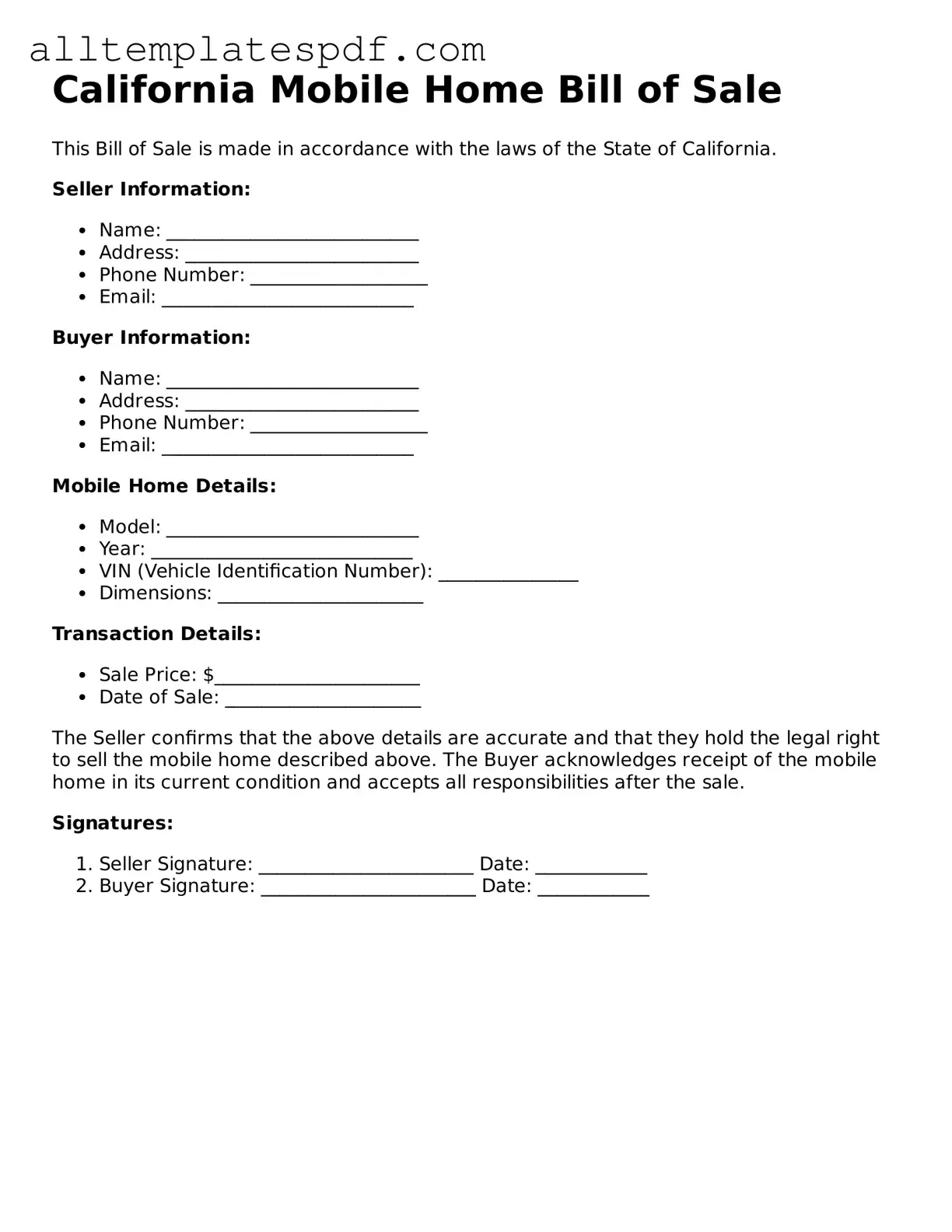When filling out the California Mobile Home Bill of Sale form, many individuals make common mistakes that can lead to complications. One frequent error is failing to include all required information. The form necessitates specific details about the mobile home, including its make, model, year, and Vehicle Identification Number (VIN). Omitting any of these details can result in delays in the transfer process.
Another mistake involves incorrect signatures. Both the seller and the buyer must sign the form. If either party neglects to sign or if the signatures do not match those on their identification documents, the transaction may be deemed invalid. It is crucial to ensure that all signatures are present and accurate.
Many people also overlook the importance of providing accurate contact information. Including incorrect phone numbers or addresses can hinder communication between the buyer and seller, leading to misunderstandings or missed deadlines. It is advisable to double-check this information before submission.
Some individuals fail to have the form notarized when required. While notarization is not always necessary, certain transactions may mandate it for legal validity. Ignoring this step can cause issues when trying to register the mobile home with the Department of Housing and Community Development.
Additionally, people sometimes neglect to retain copies of the completed form. Having a copy is essential for both parties as it serves as proof of the transaction. Without a record, disputes may arise regarding the terms of the sale.
Another common error is misunderstanding the payment terms. The form should clearly outline the payment amount and method. If this information is vague or missing, it can lead to confusion and potential disputes after the sale.
Some sellers mistakenly believe they can sell a mobile home without addressing any outstanding liens. It is important to ensure that all financial obligations related to the mobile home are settled before the sale. Selling a home with unpaid liens can result in legal complications for both the seller and buyer.
Lastly, individuals may rush through the process without thoroughly reviewing the form. Taking the time to read through each section can help catch errors and ensure that all necessary information is included. A careful review can prevent future issues and facilitate a smoother transaction.
